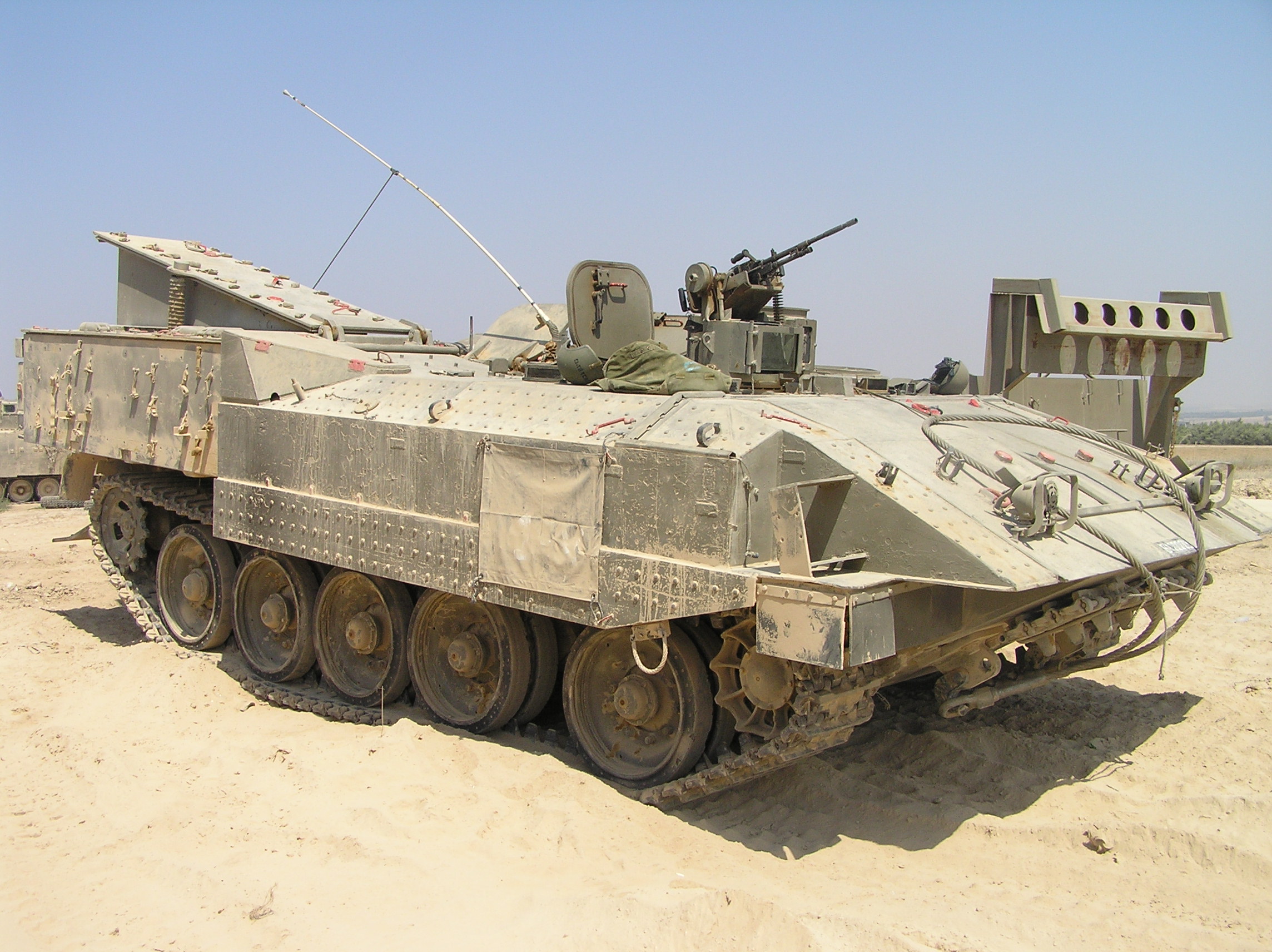Pimp my BCT - The Budget HAPC Transport Battalion
 |
| M1-based HAPC |
The existing Army Brigade Combat Team organizations contain a variety of infantry carriers, from un-armored trucks to Strykers and Bradley Fighting Vehicles. However, none of them match the protection of an MBT. Aggressive use of these vehicles in high-intensity/high-threat situations, such as urban combat against well equipped enemies, could lead to catastrophic losses. Assaulting a prepared enemy position, where the enemy has a large number of anti-armor munitions is a very dangerous proposition in a Bradley or Stryker. Both will require their infantry to dismount well before the objective and approach on foot, negating the closing speed afforded by vehicles.
The Army attempted to remedy this with the Ground Combat Vehicle (GCV) program. This program envisioned an MBT-sized vehicle carrying a full squad, with high levels of all around protection. However, it was canceled due to the forecast high cost.
 |
| GCV (Notional - BAE) |
Solution
I propose we dust off some of the thousands of older M1 Abrams MBTs we have in storage and convert them into Heavy APCs. Other countries have done this with their old tank stocks. Israel is perhaps the most famous, with their T-55-based Achzarits and Centurion-based Nagmachons.
 |
| M1 Abrams in storage |
 |
| Israeli Achzarit HAPC (based on the T-54/55) gkirok, CC BY-SA 3.0 <http://creativecommons.org/licenses/by-sa/3.0/>, via Wikimedia Commons |
To construct the Achzarit, the Israeli's removed the turret, rebuilt the superstructure, and changed the engine configuration to make room for a personnel compartment and clamshell exit ramp in the rear. They installed additional armor to improve all around protection.
For the M1 HAPC conversion, to make space for a similar configuration of rear clamshell and infantry seats, I propose removing the M1's ATG1500 gas turbine engine and existing transmission, and replacing it with an MTU 890-based diesel engine and transmission. The MTU 890 is the latest in a series of compact diesel engines made for heavy vehicles. This same engine was proposed along with a hybrid transmission for the GCV project. This same configuration could be used, or a more traditional transmission could be used in initial versions to save costs and reduce risk. The MTU 890 is significantly smaller than the ATG1500 turbine and its intake/exhausts, and is much more fuel efficient, especially at idle speeds. This could allow for smaller fuel tanks as well. The goal of the conversion is to create enough space to carry a full infantry squad of 9, plus a crew of 2.
Removing the M1's turret saves 20-25t worth of weight. Some of this savings would go towards the heavily armored superstructure and additional applique armor. An Active Protection System could be added as well, or retrofitted later.
HAPC armament takes the form of one or more remote weapon systems, either the CROWS station used on Strykers or the larger, 30mm turret used on the Stryker Dragoon. To keep the conversion price modest, I'd start with just two CROWS stations, once controlled by the commander and another controlled by the dismount section in back. Optionally, the driver could be given a set of duplicate controls, allowing them to operate the RWS when not driving the vehicle.
Organization
Since maximum armor isn't always necessary, the M1 HAPCs will be consolidated into separate transport battalions, with three companies of HAPCs each. Each company should have enough HAPCs to transport the infantry companies of an infantry battalion, or around 60 HAPCs. Each HAPC battalion also has a support company with tanker trucks and M88 recovery vehicles.
Attaching an HAPC battalion to an IBCT mechanizes all of the brigade's infantry battalions. Additionally, attaching a separate tank battalion transforms the lightly equipped, largely leg mobile IBCT into a maximally armored brigade with significant firepower. Breaking up the HAPC battalion into company-sized augments permits up-armoring individual battalions of several IBCTs.
Since HAPCs aren't native to the IBCT, soldiers will need regular training opportunities with them. Experimentation can determine the optimal frequency and training syllabus.



Comments